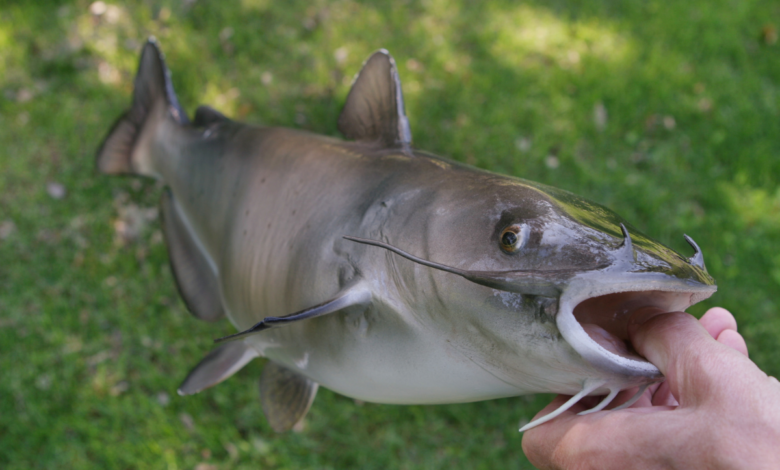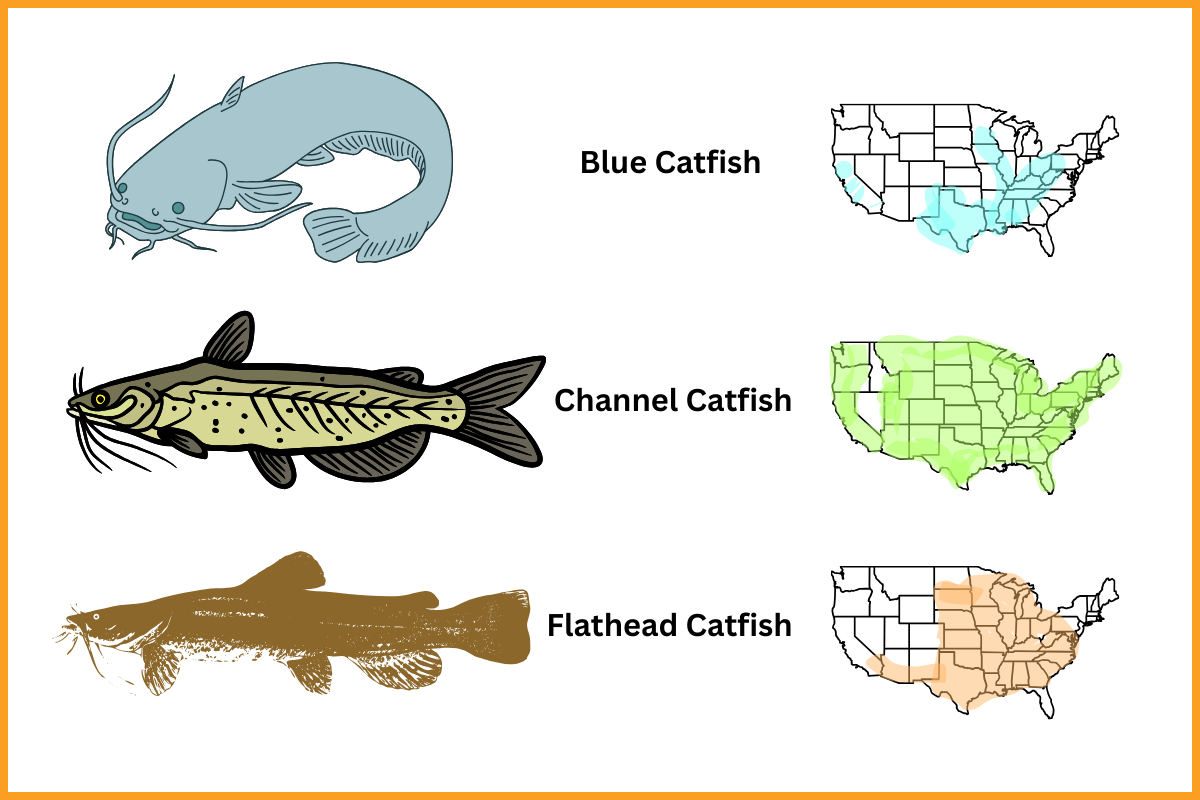Types of Catfish: Where to Find Them and How to Reel ‘em In

Catfish are a diverse and fascinating group of fish, with over 3,000 species swimming in waters across the globe. In the United States alone, there are more than 30 different types of catfish, each with their own unique characteristics and habits.
You’ve got the big ol blue catfish that can grow over 100 pounds to the smaller bullheads that you’ll find in the muck and mud all over. In fact, most kids first fish they catch is a bullhead because they love worms and it’s easy to just rest it at the bottom and pull one in.
There are many types of catfish and each has it’s role in the ecosystem but from a fishing perspective, it helps to understand their habits and behaviors so you can learn the best ways to catch them.

The Big Three Catfish Species in the United States
When it comes to catfishing in the US, there are three species that reign supreme: the blue catfish, the channel catfish, and the flathead catfish. These “Big Three” are the most sought-after by serious catfish anglers, thanks to their impressive size, hard-fighting nature, and delicious taste.
Blue Catfish
The blue catfish is the king of the catfish world, with some specimens tipping the scales at over 100 pounds.
These giants are characterized by their slate-blue coloration, deeply forked tail, and lack of spots on their bodies. Blues are native to the major river systems of the central and eastern US, including the Mississippi, Missouri, and Ohio Rivers, but have been introduced to waters as far west as California.
They are opportunistic feeders, using their sensitive barbels to locate a variety of prey, from live fish to dead and decaying matter..
Channel Catfish
Channel cats are the fish I’m most familiar with. You can find them just about anywhere in lakes, rivers, and reservoirs and you can tell them apart from the others by their olive-brown color and deeply forked tail.
Channel catfish are omnivorous, feeding on everything from aquatic insects and crawfish to fish and plant matter. While not as massive as blues, they can still reach impressive sizes, with the world record weighing in at 58 pounds.
Flathead Catfish
Flatheads are the second-largest species of catfish in the US, with some individuals reaching weights of over 100 pounds.
They are known for their distinctive appearance, with a flattened head, protruding lower jaw, and mottled yellow-brown coloration. Flatheads are found primarily in the large river systems of the central and eastern US, where they prefer deep pools with slow currents and plenty of cover.
Unlike their cousins, flatheads are almost exclusively piscivorous, meaning they feed primarily on live fish.
Other Catfish Breeds
While the Big Three may get most of the attention, there are many other types of catfish that are worth knowing about. In the US, bullheads are a popular target for casual anglers, thanks to their willingness to bite just about anything.
A lot of anglers preach the fact that they like the taste of bullhead… but to be honest, I don’t get it. They’re hardcore bottom feeders so they taste like what they eat. They also have a lot of bones so they’re not the easiest to cook up.
On the global stage, there are some truly monstrous catfish swimming in rivers and lakes around the world. The Mekong giant catfish of Southeast Asia, for example, can grow up to 9 feet long and weigh over 600 pounds.
The wels catfish of Europe is another behemoth, with the largest specimen on record weighing in at over 300 pounds and measuring over 8 feet long.
Understanding Catfish Behavior and Habitat
Whether you’re fishing early spring for bass or the dead of winter for perch, it’s important to understand their behavior, how they act in the water, where they hang out, and how they react to certain baits.
While each catfish species has its own quirks, there are some general traits that are common across the catfish family.
Catfish are largely bottom-dwellers, using their sensitive barbels to locate food along the substrate. They prefer areas with plenty of cover, such as submerged logs, rock piles, and undercut banks, where they can ambush prey and avoid predators.
Some species, like flatheads, are almost exclusively found in deep, slow-moving pools, while others, like channel cats, are more adaptable and can thrive in a variety of habitats.
Weather and seasonality also play a big role in catfish behavior. In the spring and fall, when water temperatures are cooler, catfish tend to be more active and feed more aggressively.
During the heat of summer, they may become more lethargic and harder to catch, especially in shallow or stagnant water. Wind and rain can also trigger feeding activity, as the influx of nutrients and baitfish into the water can stimulate their appetite.
Frequently Asked Questions About Catfish
How many species of catfish are there?
There are over 3,000 known species of catfish worldwide, with new ones being discovered all the time. In the United States, there are more than 30 different species.
What is the most common type of catfish?
In the US, the channel catfish is the most widely distributed and commonly caught species. They are found in nearly every state and are popular with anglers of all skill levels.
What is the best catfish to eat?
All types of catfish are considered solid to eat, but some species are more highly regarded than others. Channel catfish and bullheads (bleh) are often considered the best-eating, thanks to their mild, sweet flavor and firm texture. Blue catfish and flatheads are also delicious, but larger specimens may have a stronger, “muddier” taste.
Final Thoughts
Catfish are a unique and diverse species of fish that attract a lot of anglers. A lot of people learn how to catch them without directly targeting them but pretty much no matter where you fish – you can find one.
Check out my full guide on how to catch catfish here!
By understanding the different types of catfish, their behavior, and their habitat preferences, you can up your odds of success and enjoy all that these whiskered wonders have to offer. So grab your gear, find a likely looking spot, and get ready to tangle with one of the most popular and rewarding fish in the world – the mighty catfish!



